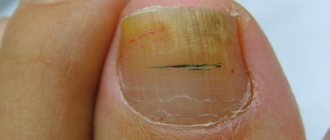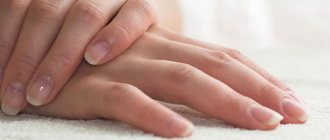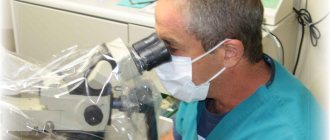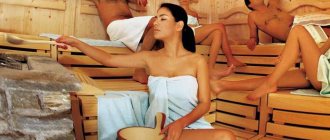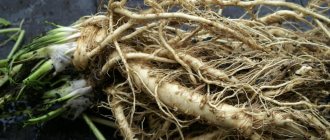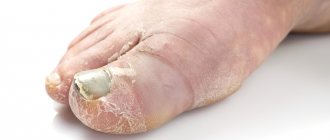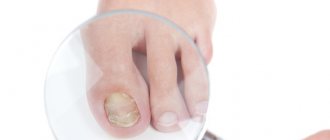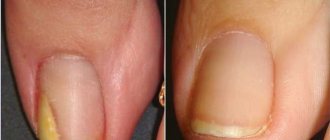Fungal infection of nails and skin occurs in every fifth inhabitant of our planet.
It causes not only visual changes, but also significant discomfort. After going to the hospital, it becomes clear that the process of healing from this disease is long and expensive. Therefore, more and more people are turning to folk recipes for help.
When choosing from the abundance of recipes offered by alternative medicine, it is difficult to understand which of them will provide real help. Therefore, today we will focus on one of the most popular and effective components - acetic acid and its effect on mycosis and onchiomycosis.
What effect does vinegar have on foot fungus?
Acetic acid, formed during natural fermentation, has found wide application in the field of cosmetology and dermatology due to its general strengthening properties.
However, if we think exclusively from the point of view of mycosis therapy, then the main purpose of using formulations based on it is the ability to have a detrimental effect on pathogenic organisms and their habitat.
By increasing acidity to critical levels for fungal spores, it kills them and prevents the spread to healthy nails and skin. This is its fungicidal and disinfecting effects.
How does vinegar affect fungus?
Apple cider vinegar for toenail fungus works due to acids. They create an unfavorable environment for the life and proliferation of bacteria. Therefore, the fungi quickly die, and the person recovers.
Vinegar against toenail fungus has the following properties:
- antiseptic;
- antimicrobial;
- fungistatic, that is, negatively affecting the growth and reproduction of fungi;
- fungicidal - destroying fungi.
Vinegar can be used as a remedy for symptomatic treatment. That is, with its help you can quickly eliminate itching and other unpleasant sensations. But at the same time, it is important to ensure that the vinegar itself does not act as a provocateur of discomfort. Therefore, when using for the first time, it is better to dilute it with water or use it to prepare a bath.
Vinegar also strengthens the nail plate and allows it to grow faster. Since treatment for onychomycosis should not end before the healthy nail grows back completely, vinegar as a primary or additional treatment method is recommended for all patients.
Which type is effective against onychomycosis?
The variety of food supplements in question on store shelves arouses a healthy interest in the consumer about which of the products presented is of high quality and beneficial for the body.
Naturally, natural products seem preferable both from the point of view of inclusion in food and in solving dermatological problems. Its only drawback is the high price and shorter shelf life. Main types of natural products:
- Balsamic . Based on grape must, this type is fermentable in natural oak barrels. It is distinguished by its high cost and unique taste, for which it is valued by gourmets.
- Wine . Red and white wines are used in the preparation process. It has a rich taste and is used for dressing salads and marinating meat.
- Rice . Widely used in preparing Japanese dishes. It has several varieties, they are united by a mild taste and aroma.
- Apple . Released during excessive fermentation of apple wine. It has a pleasant aroma and rich, but not harsh taste. It is successfully used for therapeutic purposes in the presence of cosmetic, dermatological and other diseases.
- Reed . A flavorful product based on cane sugar syrup. This type can hardly be found on the shelves of ordinary supermarkets.
- Malt . A variety based on beer wort.
During therapy, it is permissible to choose any of the above liquids. However, most recipes are created on the basis of a simple table 9% acetic acid, concentrated essence or apple variety due to their prevalence and relatively low price.
The effect of apple cider vinegar on nail fungus
Apple cider vinegar has great nutritional value and has a milder taste and aroma than regular table vinegar.
Table vinegar made from fermented apple juice can help a person with various diseases. In dermatology, this product is used in the treatment of eczema, lichen, skin infections, including onychomycosis.
The fungus develops under conditions when the skin balance is disturbed and the pH indicator indicates the presence of an alkaline environment. In this state of affairs, the acidity of the skin and stratum corneum is reduced and a favorable atmosphere is created for the intensive development of pathogenic bacteria.
Apple vinegar is a product that can lower pH levels and increase acidity. Thanks to these properties, the acid-base balance of the skin is normalized and the level of immunity increases. Medical practice has proven the antibacterial, antifungal and antiviral effects of apple cider vinegar.
A major role in the popularization of apple cider vinegar was played by the book of the American naturopathic doctor D.V. Jarvis, Honey and Other Natural Products. The author considered this remedy a panacea for a huge number of diseases, citing in his small work numerous ways to use vinegar and recipes for its preparation.
The organic acids contained in apple cider vinegar have a beneficial effect on the skin and have a pronounced keratolytic effect - they contribute to the faster formation of a healthy stratum corneum.
The natural nature of apple cider vinegar, in addition to its therapeutic effects, improves the condition of the skin - it nourishes it with microelements, vitamins and mineral salts.
Nail preparation
For deep penetration and, as a result, enhancing the effectiveness of any of the components, before carrying out therapeutic measures, it is necessary to carry out preparatory procedures, such as:
- Steaming skin and nails . To do this, immerse your legs or arms in a basin of moderately hot water (the temperature is adjusted at your own discretion) for 20 minutes. Persons with a history of hypertension should not use liquid with a temperature of more than 30 degrees, so as not to provoke a hypertensive crisis.
- Clean them thoroughly . The skin is washed using a soap solution, and all areas are treated with pumice to remove dead epidermal cells.
- Trimming and sanding . The damaged nail is cut as deep as possible, after which the edge is carefully filed away.
After sequentially performing the above steps, rinse your feet with clean water, carefully dry with a towel and allow to dry completely. Only after this apply medicinal compositions.
How to treat fungus with vinegar?
Traditional medicine knows a large number of different formulations based on this component - compresses, baths, ointments.
Choosing the appropriate method of influencing the disease is based on the individual sensitivity of the skin and the degree of its neglect.
It is necessary to take into account the fact that not a single dermatologist will approve monotherapy as a treatment, using any non-drug means.
Especially if the pathology is extensive, the lesion has reached the deep layers of the epidermis, or there is significant deformation of the nail plate. In this case, you cannot do without the use of medicinal antimycotic drugs. Therefore, before you begin to remove a fungal infection yourself, we strongly recommend that you visit a specialist and get the necessary recommendations.
Before treatment, special attention should be paid to hygiene. During water procedures, you should avoid soaps containing fragrances and fragrances. Baby or laundry soap is best for daily use.
Application at the initial and advanced stages
Vinegar can kill fungus regardless of the degree of damage. However, if in the early stages of mycosis and onychomycosis you can get by only with it, then in case of old, untreated processes, doctors insist on combining folk remedies with drug therapy.
The principles of exposure and dose are the same in both cases, the only difference is the period of use, which is much longer in advanced pathology.
Use as a prophylaxis
Due to the complexity and duration of therapy for mycosis of the skin and nail plates, it is advisable to regularly carry out preventive measures. This is especially true for those people who visit swimming pools and other public places with high humidity, which is an ideal environment for mycosis to thrive.
Vinegar for fungus is not only used in the treatment process, it is also an affordable and effective way to prevent its occurrence. It is diluted in a ratio of 1:6 with warm water and the limbs are kept in the resulting solution for 15 minutes. Such manipulations must be repeated 2-3 times a week.
If one of the family members is faced with a fungal infection, it is advisable to frequently sanitize the floors in the premises, bathtubs and basins using essence diluted in water at the rate of 4 tablespoons per 6 liters of water. This approach will help protect the rest of the household from infection.
Note! Avoid placing the patient's belongings that are in direct contact with the affected area in the common basket with dirty laundry. They must be stored and washed separately.
In addition, you should resort to the following simple tips to reduce the risk of developing pathology to a minimum:
- Keep your body clean by showering daily.
- Choose the right shoes, appropriate in size and preferably made from “breathable” natural materials.
- Choose cotton clothes for underwear. Preference is given to socks with a minimum content of synthetic fibers.
- Change socks regularly, at least once a day.
- Do not use other people's personal hygiene products and personal items - towels, washcloths, nail scissors, nail files, slippers.
- Do not walk barefoot in saunas, baths, or swimming pools.
- Monitor your own health and diet to avoid a decrease in the body’s protective functions.
Traditional recipes for onychomycosis
Vinegar products are widely used in the treatment of fungal infections. It is important that home remedies are agreed upon with a dermatologist and do not replace the main course of antifungal therapy. It is necessary to observe the dosage of the active ingredients in the composition and the regimen of use . The following ingredients are used in folk recipes:
- tar soap;
- hydrogen peroxide;
- celandine;
- iodine;
- sea salt;
- vegetable oils;
- soda;
- ethanol.
With iodine
To speed up the healing process, traditional healers recommend adding iodine to medicinal formulations to treat fungal infections. This substance has a disinfectant, antiseptic, and antimycotic effect. Important points to consider when using the composition:
- contraindications include dysfunction of the thyroid gland, pregnancy, allergy to iodine;
- advantages - safety of components, affordable price;
- disadvantages – the difficulty of treating an advanced form; caution is required in case of increased skin sensitivity.
It is advisable to combine this technique with the use of antimycotic ointments, especially with significant fungal infections. According to the recipe, you need to mix an equal amount of iodine and vinegar and apply it to the prepared nail plates. Healers recommend:
- Perform the procedure daily.
- The course of therapy is two weeks.
- Take a break for 10 days.
- Continue for another 2 weeks.
Bath with soda, salt, hydrogen peroxide and vinegar
When treating fungal infections, complex formulations are used. All components in them have a healing effect. You can achieve a quick recovery if you use a product that includes the following ingredients:
- Hydrogen peroxide – softens nails, destroys bacteria, accelerates cell recovery.
- Soda - disinfects damaged areas, penetrating deep into the source of infection.
- Sea salt – strengthens the nail plates.
A medicinal solution to combat fungal infection is used in the form of a bath for the hands or feet. The procedure lasts 15 minutes and is performed every morning and evening for a month. The advantage of treatment is the availability of ingredients. The downside is that to speed up recovery, you need to supplement therapy with medications. According to the recipe you need:
- Pour a liter of water at a temperature of 50 degrees into a basin.
- Pour in 50 ml of hydrogen peroxide with a concentration of 3% and apple cider vinegar.
- Add 100 grams of sea salt and baking soda.
- Stir until completely dissolved.
With egg
A recipe for treating fungal infections using eggs and vinegar essence is very popular. The procedure is performed daily until the new plate grows. The technique has positive aspects - natural ingredients in the composition, improvement in condition after several sessions. The disadvantages include the need for a long course of therapy. The process is carried out in the following sequence:
- The nail plates are pre-prepared.
- The product is applied to the site of onychomycosis.
- Fixed with a bandage.
- Aged for 8 hours.
To prepare a medicinal product, the following technology is required:
- Place a fresh chicken egg in a jar.
- Pour in vinegar essence.
- Keep in the dark until the shell dissolves.
- Remove the remaining thin shell.
- Add an equal amount of essence to the egg.
- Add 2 tablespoons of melted butter.
- Mix everything thoroughly until it has a creamy consistency.
Ointment with flour
In order not to damage healthy skin from exposure to aggressive vinegar essence, it is recommended to make an ointment with the addition of flour. This treatment of fungus lasts three days and requires free time or comfortable shoes so that you can walk with a bandage. The technique has its advantages and disadvantages:
- Pros: simplicity of the recipe, accessibility, ease of removing damaged tissue after the procedure.
- Disadvantages - caution is required when working with the essence - you can get burns, it is inconvenient to walk with a bandage for three days.
If you need to thoroughly clean the nail plate from fungal infection, traditional healers recommend the following recipe:
- Take two tablespoons of vinegar essence and water.
- Knead the thick dough.
- Apply ointment to nails.
- Apply a bandage to each affected finger.
- After three days, remove the softened nail tissue.
- Apply antifungal ointment.
With glycerin
Using a multi-component composition to combat nail fungus helps to quickly cope with the infection. Glycerin protects the skin surface from the influence of vinegar solution and has a strong antiseptic effect. Healers note the following features of the use of the composition:
- Pros – eliminates unpleasant odor, speeds up recovery.
- Disadvantages – presence of contraindications: pregnancy, renal failure, presence of inflammatory processes.
There are such recommendations for carrying out the procedure. The medicinal mixture is applied to cotton pads, which are placed on the damaged areas of the nail plates, fixed with a bandage with cling film, and left overnight. To prepare the composition you need to mix:
- glycerin - a tablespoon;
- vodka - take twice as much;
- vinegar essence 70% - 2 tablespoons.
Shoe processing
One of the foundations for preventing and successfully curing a fungal infection and preventing re-infection is hygienic measures.
Moreover, this applies to both the limbs themselves and shoes.
The importance of treating its inner surface is that spores that get on the material during wearing can remain on it for a long time. And even if therapy for the disease is successful, there is a real danger of its relapse. In addition, after carrying out cleansing measures, the unpleasant odor, which is one of the phenomena accompanying this disease, is eliminated.
In addition to expensive, highly targeted pharmaceutical antiseptics, highly concentrated acetic acid is also suitable for disinfecting shoes. Essence of 70% concentration is applied to a rag and the insole and inner surface of shoes or other footwear are thoroughly wiped.
It is important to carry out processing with rubber gloves to avoid chemical burns. If the product does come into contact with unprotected skin, you should immediately wash it with soap and water. After the completed manipulations, the rag is not removed, and the shoes must be placed in a bag for a day, tied tightly. After the time has passed, the shoes must be dried thoroughly.
Despite the availability of this treatment method, it has one significant drawback - the resulting aggressive environment during regular wiping can affect the wear resistance of shoes and significantly shorten their wear life. Therefore, this method is not suitable for long-term disinfection, but rather is more applicable for preventive purposes no more than 1-2 times a month.
Treatment at home
No one canceled a trip to the hospital and a consultation with a doctor. This is the basis of treatment. But every person can multiply the results of medication by using traditional methods. The main condition is that the doctor must know about your manipulations and adjust the treatment taking them into account.
There is more than one recipe for treating fungus at home. The main options for applying medications are compresses, ointments, baths and lotions.
Before applying vinegar essence against nail fungus, the top layer of the nail is steamed and filed off. After each procedure, be sure to disinfect the nail file, otherwise the spores will return and attack with renewed vigor.
The removed layer of the nail will allow the medications to penetrate deeper and destroy more bacteria.
Compresses
Apply them daily
6-8 hours on a cotton pad or cotton wool wrapped in a bandage and fix on the affected area. After removal, do not wash the affected area.
- Apply regular apple cider vinegar to the skin. It kills many fungal spores.
- 10 mg. combine apple cider vinegar with 2 drops of iodine.
Baths
The operating principle of the baths is
diluting active ingredients in water.
- The temperature should be room temperature.
- The procedure lasts as long as the water cools, that is, about 15 minutes.
- It is carried out 2 times a day.
- When finished, do not wash or dry your feet, let them dry.
You can cure foot fungus with vinegar essence by taking baths, adding 45 ml to 1 liter of chilled boiled water. essences.
Lotions
They are done daily and kept for up to half an hour. Apply with a cotton pad and secure with cling film. And on top they put on a clean sock or glove made of natural fabric.
- 9% vinegar is suitable for the procedure. A cotton pad is dipped into it and applied to the affected area.
- For better effect, add glycerin 1:1 to 9% vinegar.
- Another recipe for a lotion against fungus is equal parts of glycerin, medical alcohol and vinegar essence.
Ointments
To make an ointment for fungus for feet and hands in
At home, Vaseline is used as the basis for all ingredients. It will help keep the solution on the affected area for as long as possible. At the same time, the surface is softened, which facilitates the penetration of drugs into the nail structure.
The ointments are applied with a cotton swab, wrapped in cling film and left overnight. In the morning, remove the bandage and thoroughly wash the skin with soap. The procedure is also carried out daily. Vinegar essence and egg are a powerful combination for treating nail fungus.
- It is not difficult to make an ointment from vinegar essence and eggs against fungus. – An ordinary chicken egg is thoroughly washed and dipped in vinegar essence. – After 3-4 days, the shell is almost completely dissolved and after removing the egg film, the ingredients are mixed. – To obtain a thicker consistency, add butter. – Vinegar with egg will not only destroy columns of spores, but will also protect the nail from the excessive influence of aggressive components of the medicine.
- Take two parts vinegar essence, 1 part glycerin, 1 part olive oil and 1 part Dimethylphthalate. – This mixture can also be applied to skin damaged by fungus.
If discomfort or pain occurs, you must stop the procedure. The reason for this may be excessive concentration of the drug or intolerance to any of the drugs.
Treatment of fungus with vinegar in children, pregnant and lactating women
Modern pediatricians have a negative attitude towards the use of this component. Despite the experience of the older generation, doctors do not advise resorting to its use, especially when treating patients before adolescence.
And under the age of 3 years, this advice develops into a categorical prohibition. The reason for this is that the skin is much more sensitive to external irritants, compared to an adult, and the possibility of intoxication even with minor contact with acetic acid in a low concentration.
When a child is diagnosed with mycotic lesions, dermatologists select gentle treatment regimens in accordance with age and other individual characteristics. Traditional medicine can cause irreparable harm to young patients if used ineptly and incorrectly.
The same applies to pregnant women. There are other, safer methods of therapy that do not affect the fetus. Therefore, at the slightest suspicion of the development of pathology, you should promptly seek medical help.
During breastfeeding the situation changes. It is permissible for a new mother to use baths and compresses, but avoid the skin of the breast and around it, since their contents can be absorbed and enter the baby’s body with mother’s milk and cause negative consequences in the form of poisoning, chemical burns of the mucous membranes of the oral cavity or digestive tract.
Contraindications and side effects
In addition to pregnancy and childhood, there are a number of strict contraindications that exclude the possibility of being treated in this way, namely:
- The presence of violations of the integrity of the skin - trophic ulcers, mechanical damage in the form of wounds, scratches, microcracks.
- Dermatological diseases such as eczema of various types, psoriasis, as well as urticaria and other skin rashes.
- Allergic reaction
It is unacceptable to use vinegar-based formulations for the treatment of pathologies in the groin area and on the face in close proximity to the eyes. Contact of the products (or their vapors in the case of the organs of vision) on the mucous membranes will cause serious burns.
People with sensitive skin are more likely to experience adverse reactions, which include burning and redness. However, no one is immune from such manifestations if the prescribed dosages are neglected. Even their minimal excess will most likely cause the reactions described above and can lead to skin burns.
Advice! Among all the recipes, baths are best for first use. With their help, you can safely assess the sensitivity of the skin to acetic acid. To do this, add it to the water gradually, 1 tbsp at a time. spoon with a break of 2-3 minutes. The appearance of a burning sensation before reaching the concentration specified in the recipe is a sign that the acidity of the solution exceeds the permissible individual norm and the procedure must be completed. Thus, you can understand whether this method of treatment is suitable and you can set proportions that are safe for yourself.
How to cure an advanced form of fungus with apple cider vinegar
If you have started the disease and did not start dealing with it at the initial stage, you will have to be patient. Treating nail fungus with vinegar will take a whole year. The procedure should be done daily until results are obtained. There are several ways to use the product: compresses, lotions, ointments. Apple cider vinegar not only destroys the fungus, but also nourishes the nail plate and the skin around it.
The easiest way is to drip vinegar on the nail without any additives twice a day. You can make lotions from it, but they must be kept for 3 hours. An effective antifungal agent - a mixture of equal parts of vinegar and iodine - is applied to the affected area. Try making an ointment, lubricate the area of the disease in the morning and evening. The recipe follows:
- Grind 100 grams of Kalanchoe.
- Add a spoonful of apple cider vinegar.
- Add 10 grams of honey.
- Add 30 grams of eucalyptus oil.
- Keep in cool twilight for three days.
Analogs
Due to the specific nature of the action, namely the formation of high acidity in the area of use of vinegar-containing products, boric and salicylic acids have a similar principle of action. Both of them have a pronounced antiseptic effect and can be included in applications, baths, or applied independently. You can purchase these drugs at any pharmacy at an affordable price.
Compress with iodine
The vinegar-iodine compress has a strong bactericidal effect, thanks to which recovery occurs much faster. To prepare a medicinal solution, 1 tablespoon of a 9% food product is combined with 4 drops of iodine.
The resulting mixture is applied liberally with a brush to all nails, regardless of the presence of a fungal infection, every day for 2 weeks at night, after which the limb is wrapped with a gauze bandage. The disadvantages of this method are the coloring of the skin and nail plates, which makes them look unattractive. Therefore, it is better to use the recipe when wearing closed shoes - in spring, autumn and winter.
Alcohol compress
In case of advanced onychomycosis, acetic-alcohol applications with the addition of hydrogen peroxide are also used for long-term fungicidal therapy. All components are mixed in equal parts, applied to a piece of bandage or clean cloth, folded several times and applied to the affected areas for 10-15 minutes, once a day. A prerequisite is to wash your feet under running water after the procedure.
It is important to know! You can reduce the likelihood of skin irritation by applying baby cream to it. It will become a protective barrier against the aggressive effects of the mixture.
Compress with hydrogen peroxide
A more gentle than the previous, but no less effective way to combat fungal diseases is to alternate the action of a food additive and hydrogen peroxide. A cotton-gauze swab soaked in one of the medicinal liquids is applied to the diseased area once a day for 20 minutes. The next day, repeat the procedure using the second solution.
The therapeutic effect is possible only with high-quality preliminary steaming of the integument for deeper penetration of the components of the lotions. Therefore, before treating foot fungus with vinegar or peroxide, you must carefully complete all steps of the preparatory procedure.
Ointment with Kalanchoe
Homemade aloe is one of the most useful and frequently used herbal ingredients in folk medicine due to its rich composition.
Thanks to the content of phytoncides, it has an anti-inflammatory and antimicrobial effect, and the vitamins contained in Kalanchoe promote regeneration and rapid growth of nails. To prepare a special ointment you will need:
- Liquid honey – 1 tablespoon
- 100 grams of Kalanchoe leaves, previously placed in the refrigerator overnight.
- 20 grams of acetic acid, malic or table acid 9%.
- Any essential oil with an antiseptic effect - eucalyptus, tea tree or others.
Grind the leaves into a paste, add the remaining ingredients and leave in a cool place for at least 3 days. Apply the resulting mixture to the areas of infection overnight, covering the area of treatment with a cloth and securing it with a band-aid.
Vinegar paste with egg against foot fungus
Everyone from a school chemistry course knows about the effect of an acidic environment on an egg shell. So it was this experience that formed the basis for the next recipe. The egg is lowered into a container slightly larger in size and filled with a 9% food additive.
After 3-4 days, when the shell has completely dissolved, the film is removed from the egg and mixed into the same liquid. To obtain the required consistency, butter is added to the composition. The paste is applied to the affected areas under a film overnight. The manipulation is repeated until complete recovery with breaks 1-2 times a week.
Vinegar and celandine against fungus
Due to the combination of two rather caustic components, such a combination can be applied exclusively to damaged, infected nails, avoiding contact with the surrounding skin.
If we have already talked about the effect of the first component, then celandine, in turn, brings an anesthetic effect to the composition of the product and reduces itching due to the content of chelidonin.
To prepare an antifungal mixture, you should use ready-made pharmaceutical oils of this plant or collected and dried herbs.
It is necessary to take into account that when choosing a dry plant, preparing the infusion will take at least 14 days, since after mixing in a proportion of 30 grams of herb per bottle of acetic acid (malic or regular table), it should be infused in a dark place. After using the ready-made liquid extract, you can use the product immediately.
The resulting medicine can be applied as a lotion during advanced processes or added a small amount to water when taking baths.
Vinegar-glycerin compress
This therapeutic agent has proven itself at any stage of the course of mycosis and can be used for preventive purposes. Glycerin, which has a softening effect, makes the recipe more gentle and, as a result, suitable for long-term use. Also, the vinegar-glycerin mixture in the complex stabilizes the PH balance and eliminates unpleasant symptoms.
It is very simple to prepare the mixture: 70% essence is combined with glycerin in a 1:1 ratio; if desired, you can also add the same amount of vodka. Apply the resulting liquid to the areas of skin disease 2 times a day.
This is interesting! In addition to preventive antifungal purposes, the glycerin contained in the composition provides additional care for the skin of the feet, preventing the appearance of corns and excessive dryness of the heels. Therefore, regular use of this method 1-2 times a week will make your legs not only healthy, but also beautiful.
Remember, therapy cannot be stopped until complete recovery and the growth of a healthy nail plate, even if at first glance it seems that the disease has subsided.
The insidiousness of a fungal infection is that at the slightest omission of antimycotic procedures or early cessation of their implementation, it will make itself felt again. Therefore, the implementation of doctor’s orders, combined with the use of alternative medicine, should be systematic and long-term, even if the symptoms of the disease are no longer bothersome.
How to treat nail fungus?
If the symptoms of the fungus are pronounced, baths with vinegar and other ingredients are added to the treatment.
Treatment of fungus is a long and labor-intensive process, so you need to be prepared for the fact that you will have to fight for beautiful and healthy nails. Onychomycosis takes a long time to treat; several procedures cannot be done.
If only vinegar is used, the course of treatment should be at least 6 months. With the simultaneous use of vinegar and special ointments or varnishes, treatment is continued until the symptoms of the disease completely disappear.
The nail treatment procedure should be done daily. If lotions are used, treatment is carried out twice a day. In cases where the patient additionally uses drug therapy, treatment of the nail plates with vinegar should be carried out before bedtime.
Before starting treatment, you should make sure that there is no allergic reaction to the drug used. To do this, you need to dilute the vinegar with water and apply a small amount to the crook of your elbow. If redness or irritation does not appear after a few hours, the product can be used to treat nails.
Treatment is carried out in various ways. For mild forms of fungus, it is enough to regularly wipe your nails with a solution of vinegar and water. For severe symptoms, baths with vinegar and other ingredients are added to the treatment. To treat the skin of the feet, baths and compresses are used. You can also use vinegar to prepare homemade ointments for fungus.
Foot baths
The basis for treating fungus is foot baths. They provide:
- softening of the nail plates;
- improvement of nail nutrition;
- antiseptic skin treatment;
- protection against the spread of pathogenic microflora.
Vinegar baths can be used both as an independent remedy and as a preparation for the feet before applying medications.
- Apple cider vinegar and soda are the best bath for nail fungus. To prepare the product, you need to add 4 tablespoons of vinegar and the same amount of soda to a bowl of water. The feet are placed in the solution for 20 minutes, then rinsed and dried thoroughly.
- Heat a liter of apple cider vinegar in a water bath and pour into a bowl with 3 liters of water. Soak feet in vinegar for 10 minutes, then rinse with water and apply antifungal cream or varnish.
- Add 200 ml of apple cider vinegar and 100 ml of lemon juice to the foot bath. Keep your feet in this solution for 20 minutes.
- Add 4 large spoons of sea salt, baking soda and apple cider vinegar to a bowl of water. Take a bath for 20 minutes, then put on socks and walk like this for several hours. There is no need to rinse off the vinegar.
- Squeeze the juice from several carrots, mix 3 large spoons of juice with the same amount of vinegar and pour the mixture into a bowl of hot water. Take a bath every day before bed for 20 minutes.
Foot baths with vinegar should be done daily, preferably before bed. The course of treatment is 2-3 weeks. When using baths, remember that vinegar dries out the skin of your feet. It is recommended to lubricate healthy areas of the epidermis of the feet with a rich cream after such a procedure.
Compresses for nail fungus
Treatment of nail fungus with apple cider vinegar and soda can be done using compresses. This is a very effective remedy that will quickly get rid of pathogenic microflora. To prepare a compress, apply a small amount of baking soda to the nail and press on top with a cotton pad soaked generously in apple cider vinegar. At the same time, a reaction will begin, the nail may tingle. Keep the compress for 5 minutes. Then wipe the nail with a cotton pad soaked in plain water.
Treatment of fungus with apple cider vinegar is carried out by applying a 9% solution of this product to the nail plates. In this case, you need to moisten a cotton pad in the product and simply wipe the nail. There is no need to rinse off the vinegar. In order for the treatment to quickly bring results, the procedure must be repeated twice a day.
Another effective remedy that uses apple cider vinegar and soda for fungus is compresses with water. To prepare the product, you need to take two parts water and one part each vinegar and soda. The mixture is applied to a cotton pad, which is applied to the nail. The top of the compress should be secured with a bandage. You need to keep the product on for two hours. The same compress can be used for fungal infections on the feet.
A powerful remedy for fungus: mix two tablespoons of vinegar essence with the same amount of vodka, add a large spoonful of glycerin. Apply the mixture under a compress for an hour and then rinse with water.
Treatment can be carried out with iodine. This product has pronounced antifungal activity and goes well with vinegar. To prepare the medicine, you need to mix both ingredients in equal proportions and apply to your nails with a brush or cotton swab twice a day. There is no need to rinse off the solution.
Vinegar can be used in combination with vegetable oils. Sea buckthorn oil is effective against fungus, as it has anti-inflammatory and wound-healing properties. You need to mix a tablespoon of apple cider vinegar and two tablespoons of heated oil and apply it to the nail affected by the fungus. The compress is secured on top with a bandage. You can keep the product all night.
Ointments for fungus
Vinegar-based ointments are a good way to fight fungal infections.
How to cure or get rid of fungus with apple cider vinegar - it depends on the localization of the pathogenic microflora. For example, if the skin on the legs is affected, you can use ointments. For onychomycosis, they are less effective due to their thick consistency, which does not allow the active substances to penetrate deep into the nail plate.
- Mix 3 large spoons of Kalanchoe juice and two tablespoons of eucalyptus oil, add a tablespoon of honey and vinegar. Apply the mixture to the affected area, securing with a bandage. You need to keep the ointment for an hour, after which it needs to be washed off with water.
- Mix one egg white with a tablespoon of vinegar and the same amount of butter. Apply to affected nails or skin every day before bed and leave overnight.
- Mix vinegar and glycerin in equal proportions. Apply the mixture to the affected nails every time after a foot bath for fungus.
- Mix a tablespoon of vinegar, lemon juice and honey. Apply to the skin under a bandage, leave for an hour, and then rinse with water.
Vinegar-based ointments should be used within 2-3 weeks. Then a break is needed, during which treatment is carried out by other means, and after two weeks the course can be repeated.
